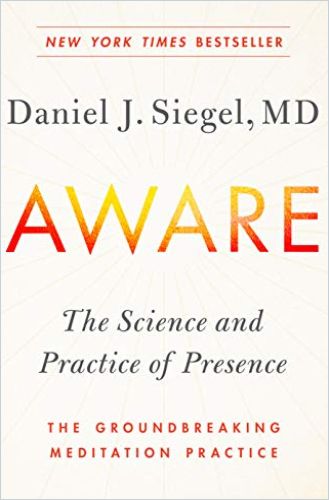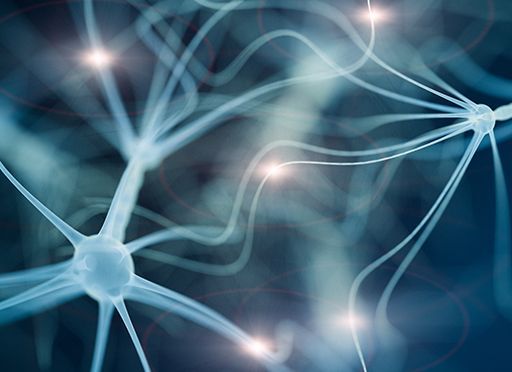Best-selling clinical psychiatry professor Dr. Daniel J. Siegel offers a workable manual for understanding and practicing healthy mindfulness.

Become Aware
Your Consciousness
In this New York Times bestseller, UCLA School of Medicine clinical psychiatry professor Dr. Daniel J. Siegel explains that you can expand your consciousness by practicing “attention, awareness and intention.”
This wider view of who we are is sometimes challenging to communicate – but it can be a matter of life and death. Daniel J. Siegel
The positive physical effects of these practices, Siegel claims, include strengthening the immune function, improving gene regulation, strengthening the cardiovascular system, and helping the body to repair itself and remain young.
Siegel’s peers were generous in their praise. Bestseller Deepak Chopra, MD, wrote, “Read this book if you want true freedom and spontaneous creativity.” CEO of The Huffington Post, Arianna Huffington, called this, “A life-changing journey into the deep nature of our consciousness.” And Jack Kornfield, author of The Wise Heart, called it, “… a visionary blend of neuroscience, physics and cutting-edge psychology combined with creative approaches to mindfulness and compassion.”
Wheel of Awareness
One of Siegel’s themes is that shifting your attention allows you to become less reactive and more receptive. He offers a primary principle of neuroscience: Doing things repeatedly changes the neural structure as it strengthens specific clusters of neurons, so they fire together.
When we learn to cultivate our capacity for being aware, the quality of our life and the strength of our mind are enhanced.Daniel J. Siegel
Siegel says people need a practice, like his “Wheel of Awareness,” to help them experience a new way to be and to act. The Wheel is Siegel’s visual metaphor for how minds can function. He asks you to picture a wheel with a hub, a rim and a single spoke connecting the two. The hub represents “being aware” or “knowing.” The rim contains known information, including the traditional “five senses,” plus “bodily sensations,” “mental activities” and “interconnection.” The spoke represents the focus of your attention.
Siegel wants you to move the spoke of attention along the rim with your imagination, shifting focus from the senses that gather information about the external world to becoming aware of what’s going on in your body, mind or relationships.
The Wheel of Awareness is a tool for helping us to differentiate and link energy and information in our lives.Daniel J. Siegel
Siegel advises drawing a map of the Wheel to help you move from senses to bodily sensations to your mind to interconnection. The Wheel, he says, helps you connect information and energy, and increases your awareness of your body, your inner self, your relationships, how you connect with others and how they differentiate from you.
The author explains that your mind has distinct attributes, including consciousness, subjective awareness, information processing and self-organization. Siegel urges you to train your mind by focusing your attention inward.
“Mindsight”
Dr. Siegel encourages you to sense your breath, the movement of your chest and your abdomen, and let sensation move through your body. He refers to this as the use of “mindsight”: how you see your own and others’ minds and how you respect your distinct identity as you connect with others.
Dr. Siegel details three related practices you can use to train your mind: Focus your attention, open your awareness and practice “kind intention.”
When we practice integrating our consciousness, when we harness the hub and access the plane of possibility, we become more deeply aware of our interconnected identities.Daniel J. Siegel
Siegel designates people who live in isolation and think of themselves as solitary as unhealthy. Relating to others, he insists, lets you exchange information and energy. In his analysis, your individual consciousness profoundly relates to your social context. He regards reading others’ intentions and practicing empathy as the roots of individual consciousness.
Filters
Siegel explains that people rarely experience reality or their own consciousness directly. They impose filters. He finds that those who suffer trauma, anxiety or depression benefit from releasing their filters and shifting their consciousness. He urges you to let information and energy emerge in a fresh, unfiltered way to nourish a more innocent and open mind. People share cultural filters, he divulges, but they use individual filters to shape their reality.
Being Present
Siegel returns to his fundamental tropes regarding meditation and other mindful disciplines: Training your mind, he assures you, will let you be fully present in your life.
When we learn to cultivate our capacity for being aware, the quality of our life and the strength of our mind are enhanced.Daniel J. Siegel
Siegel concedes that many people practice spiritual or mental disciplines incompletely, leaving self-limiting past traumas and patterns intact. Mind training, he explains, can reduce pain and hasten healing. He notes that anything that increases awareness and integration has value, including yoga or walking in the woods.
Awareness
Siegel often falls into an academic voice that seems dry for his transcendent subject matter. He presents his most significant metaphor, the Wheel of Awareness, clumsily, and you may need several readings to gain a clear sense of how to apply this concept to mindfulness. Like many academics, he tends to repeat certain ideas and to hammer on his main themes.
Energy is the movement from a potential to that potential being realized.Daniel J. Siegel
That said, his advice seems practical and aligns with most writing on the subject of increasing awareness and mindfulness. Dr. Siegel offers neither a mindfulness guide nor an academic discussion of awareness techniques – his work lies somewhere in between. However, even a superficial read provides a workable starting point for those who are less familiar with mindfulness and awareness practices. Those readers should skip any models or concepts that seem complex, and embrace Siegel’s exercises that call for spiritual awareness and discipline.
Dr. Siegel also wrote Mindsight, Brainstorm, The Developing Mind and Pocket Guide to Interpersonal Neurobiology. With Tina Payne Bryson, he co-authored The Whole-Brain Child and No-Drama Discipline. And he and Mary Hartzell co-wrote Parenting from the Inside Out.









